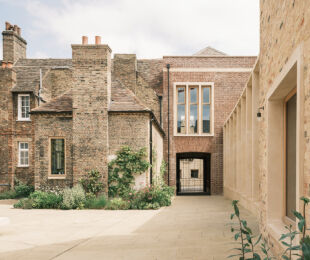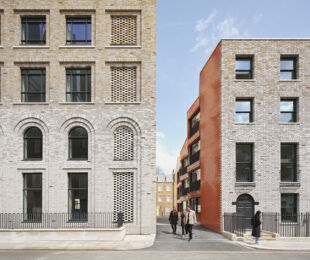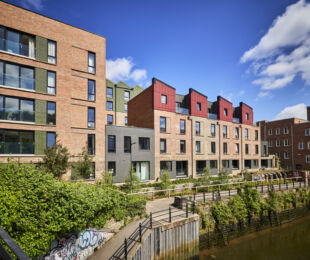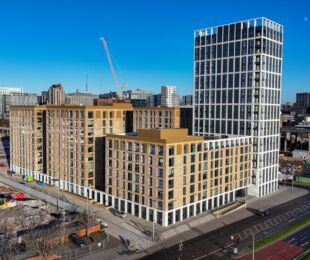
Andre Kong Studio has extended a Victorian terraced house in southeast London by extruding a series of stepped brick volumes hosting a new bedroom, study and bathroom.
The brief emerged out of two significant post-lockdown changes for the family: the arrival of another child and a shift to permanently working from home. Suddenly the family were outgrowing their house and needed more space and a refuge from the rest of the busy youth-filled household.
Echoing the original plan of the house, the massing follows its L-shape, breaking down an otherwise imposing mass. This is achieved with volumes that step down like a telescope, pulling out of each other, articulating clerestories for light filled rooms.
The blue-grey brick cheeks of the outrigger, which blend with the roof colour, follow the same stepping logic, creating a tapered and textured effect. The sizes of the stepping brickwork define the form. The dimensions of the materials also inform the scale and proportion of the lighter brick portals from which each smaller volume is drawn out of.
Instead of using full bricks for the outrigger volume, which would have been heavy and would have required unsustainable and costly structural steel upgrades to the existing house, andre kong studio opted to use brick slips on a lighter insulated timber structure to create the same effect whilst also achieving a better thermal performance for the same thickness of wall. The existing roof tiles were retained and re-used to minimise wastage.
Due to the intricate mathematical nature of the project, which relies on careful positioning, balancing and aligning of each vertical and horizontal row of bricks in a series to define the internal spaces and the resulting window apertures, the main challenge of the project was to re-adjust the drawings after the opening works had started and more accurate measurements of the roof spaces could be taken. Once the design had been massaged to take into account discrepancies between stage 4 and 5, the challenge prevailed in ensuring the contractor understood the challenges of the geometry and the impacts of not accurately following the design. This involved diagramming and a rigorous and iterative process of setting out geometry on site, testing and mocking up a row of bricks. In the end the challenges were overcome successfully and the result was the intended design!
The light-filled interiors feature natural materials such as natural wood and stone, exposed timber rafters and the original brick walls, celebrating the stepping brickwork of the chimney stacks to reinforce a relationship between the inside and outside, between old and new.







